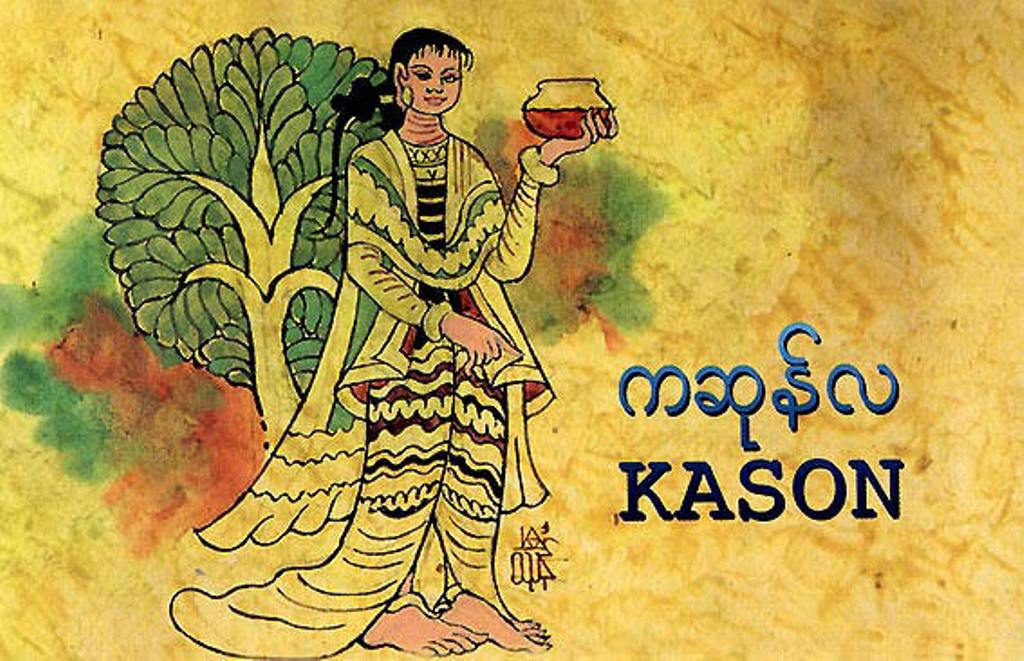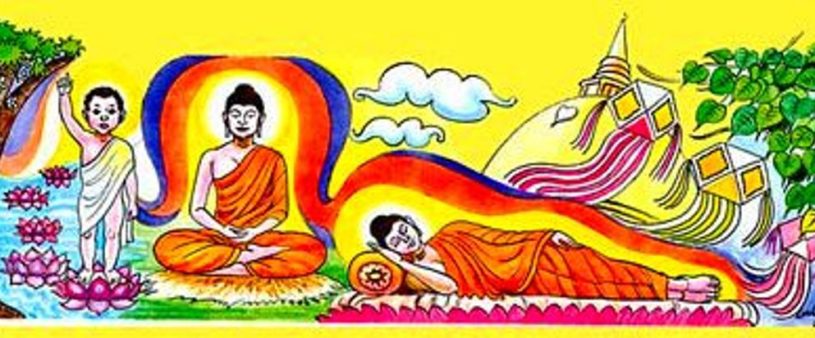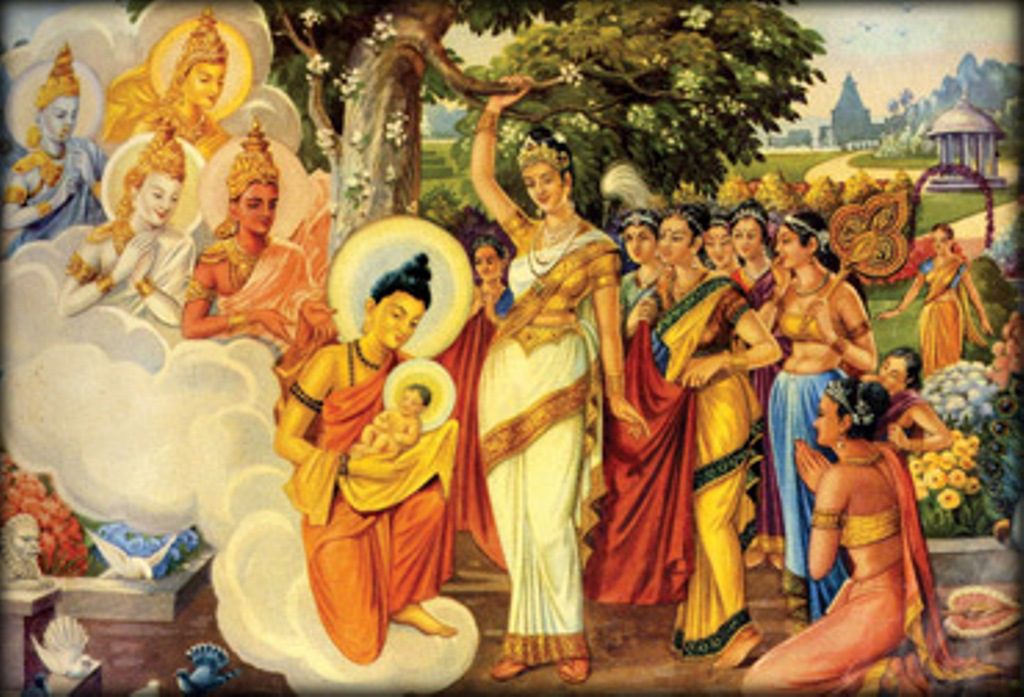
Vesākha (Pali; Sanskrit: Vaiśākha), also known as Buddha Purnima and Buddha Day, is a holiday observed traditionally by Buddhists on different days in India, Sri Lanka, China, Japan, South Korea, Taiwan, Nepal, Tibet, Bangladesh, Bhutan, Indonesia, Singapore, Vietnam, Thailand, Cambodia, Laos, Malaysia and Myanmar and in other places all over the world. Sometimes informally called “Buddha’s Birthday”, it commemorates the birth, enlightenment (Buddhahood), and death (Parinirvāna) of Gautama Buddha in the Theravada or southern tradition.
The decision to agree to celebrate Vesākha as the Buddha’s birthday was formalized at the first conference of the World Fellowship of Buddhists held in Sri Lanka in 1950, although festivals at this time in the Buddhist world are a centuries-old tradition. The resolution that was adopted at the World Conference reads as follows:
That this Conference of the World Fellowship of Buddhists, while recording its appreciation of the gracious act of His Majesty, the Maharaja of Nepal in making the full-moon day of Vesak a Public Holiday in Nepal, earnestly requests the Heads of Governments of all countries in which large or small number of Buddhists are to be found, to take steps to make the full-moon day in the month of May a Public Holiday in honour of the Buddha, who is universally acclaimed as one of the greatest benefactors of Humanity.

On Vesākha Day, Buddhists all over the world commemorate events of significance to Buddhists of all traditions: The birth, enlightenment and the passing away of Gautama Buddha. As Buddhism spread from India it was assimilated into many foreign cultures, and consequently Vesākha is celebrated in many different ways all over the world. In India, Vaishakh Purnima day is also known as Buddha Jayanti day and has been traditionally accepted as Buddha’s birth day.
In 1999, the United Nations resolved to internationally observe the day of Vesak at its headquarters and offices.
The name of the observance is derived from the Pali term vesākha or Sanskrit vaiśākha, which is the name of the lunar month in the Hindu calendar falling in April–May (see Vaisakha).In Mahayana Buddhist traditions, the holiday is known by its Sanskrit name (Vaiśākha) and derived variants of it. Local renditions of the name vary by language, including:
• Assamese: বুদ্ধ পূর্ণিমা Buddho Purnima
• Bengali: বুদ্ধ পূর্ণিমা Buddho Purnima, বুদ্ধ জয়ন্তী Buddho Joyonti, ভেসাক Bhesak
• Dzongkha: སྟོན་པའི་དུས་ཆེན་༥ འཛོམས་ Dhüchen Nga Zom
• Burmese: ကဆုန်လပြည့် ဗုဒ္ဓနေ့ “Full Moon Day”
• Chinese: 佛陀誕辰紀念日; pinyin: Fótuó dànchén jìniàn rì, 佛誕 (Fódàn, Birthday of the Buddha), 浴佛節 (Yùfójié, Occasion of Bathing the Buddha), 衛塞節 (Wèisāi jié)
• Hindi: बुद्ध पूर्णिमा Buddha Pūrṇimā, बुद्ध जयन्ती Buddha Jayantī, वैशाख पूर्णिमा Vaisākh Pūrṇimā
• Indonesian: Hari Raya Waisak
• Japanese: 花祭 Hanamatsuri (Day of Flowers)
• Khmer: វិសាខបូជា Visak Bochea
• Kannada: ಬುದ್ಧ ಪೌರ್ಣಮಿ Buddha Pournami
• Hangul: 석가 탄신일; Hanja: 釋迦誕辰日; RR: Seokka Tanshin-il (Birthday of the Shakyamuni Buddha)
• Lao: ວິສາຂະບູຊາ Vixakha Bouxa
• Malay: Hari Wesak (هاري ويسق)
• Mongolian: Бурхан Багшийн Их Дүйцэн Өдөр (Lord Buddha’s Great Festival Day)
• Newar: स्वांया पुन्हि Swānyā Punhi
• Nepali: बुद्ध पुर्णिमा Buddha Purnima, बुद्ध जयन्ति Buddha Jayanti
• Sinhalese: වෙසක් Vesak
• Tamil: விசாக தினம் Vicāka Tiṉam
• Telugu: బుద్ధ పౌర్ణమి Buddha Pournami or alternatively Telugu: వైశాఖ పౌర్ణమి Vaisakha Pournami
• Thai: วิสาขบูชา Wisakha Bucha
• Tibetan: ས་ག་ཟླ་བ།, THL: Sa Ga Dawa
• Vietnamese: Phật Đản (Birthday of the Buddha)

On Vesākha, devout Buddhists and followers alike assemble in their various temples before dawn for the ceremonial and honorable hoisting of the Buddhist flag and the singing of hymns in praise of the holy triple gem: The Buddha, The Dharma (his teachings), and The Sangha (his disciples). Devotees may bring simple offerings of flowers, candles and joss-sticks to lay at the feet of their teacher. These symbolic offerings are to remind followers that just as the beautiful flowers would wither away after a short while and the candles and joss-sticks would soon burn out, so too is life subject to decay and destruction. Devotees are enjoined to make a special effort to refrain from killing of any kind. They are encouraged to partake of vegetarian food for the day. In some countries, notably Sri Lanka, two days are set aside for the celebration of Vesākha and all liquor shops and slaughter houses are closed by government decree during the two days.
Also birds, insects and animals are released by the thousands in what is known as a ‘symbolic act of liberation’ of giving freedom to those who are in captivity, imprisoned, or tortured against their will. (The practice, however, is banned in some countries such as Singapore, as it is believed that the released animals are unable to survive long-term and may adversely impact the local ecosystem if they do.)
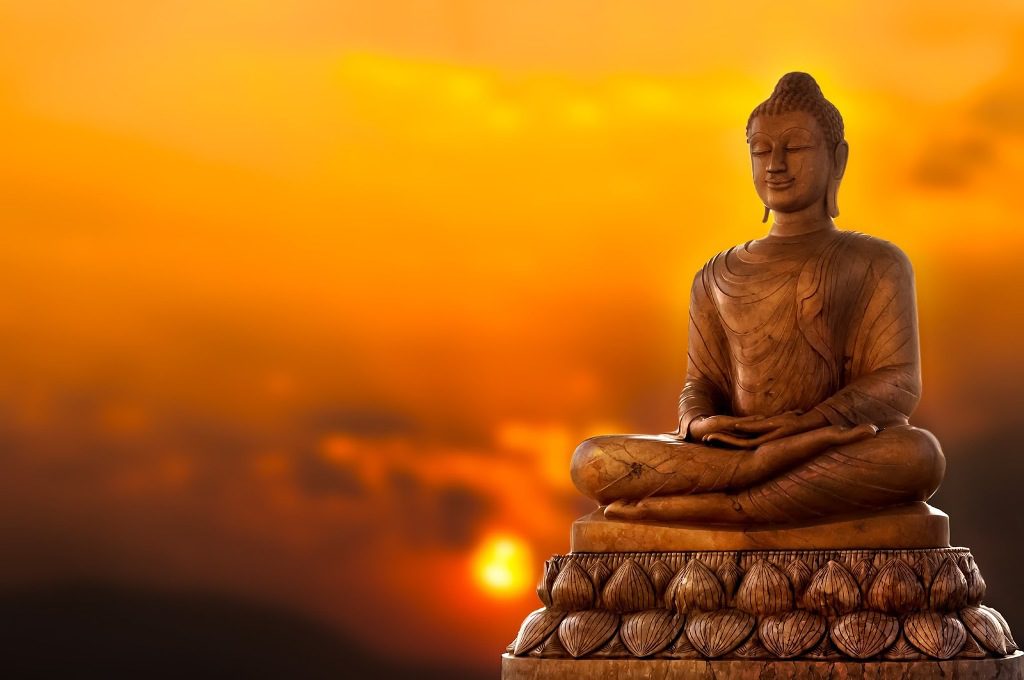
Some devout Buddhists will wear a simple white dress and spend the whole day in temples with renewed determination to observe the eight Precepts.
Devout Buddhists undertake to lead a noble life according to the teaching by making daily affirmations to observe the Five Precepts. However, on special days, notably new moon and full moon days, they observe the eight Precepts to train themselves to practice morality, simplicity, and humility.
Some temples also display a small statue of the Buddha in front of the altar in a small basin filled with water and decorated with flowers, allowing devotees to pour water over the statue; it is symbolic of the cleansing of a practitioner’s bad karma, and to reenact the events following the Buddha’s birth, when devas and spirits made heavenly offerings to him.
Devotees are expected to listen to talks given by monks. On this day, monks will recite verses uttered by the Buddha twenty-five centuries ago to invoke peace and happiness for the government and the people. Buddhists are reminded to live in harmony with people of other faiths and to respect the beliefs of other people as the Buddha taught.
Celebrating Vesākha also means making special efforts to bring happiness to the unfortunate like the aged, the handicapped and the sick. To this day, Buddhists will distribute gifts in cash and kind to various charitable homes throughout the country. Vesākha is also a time for great joy and happiness, expressed not by pandering to one’s appetites but by concentrating on useful activities such as decorating and illuminating temples, painting and creating exquisite scenes from the life of the Buddha for public dissemination. Devout Buddhists also vie with one another to provide refreshments and vegetarian food to followers who visit the temple to pay homage to the Enlightened One.
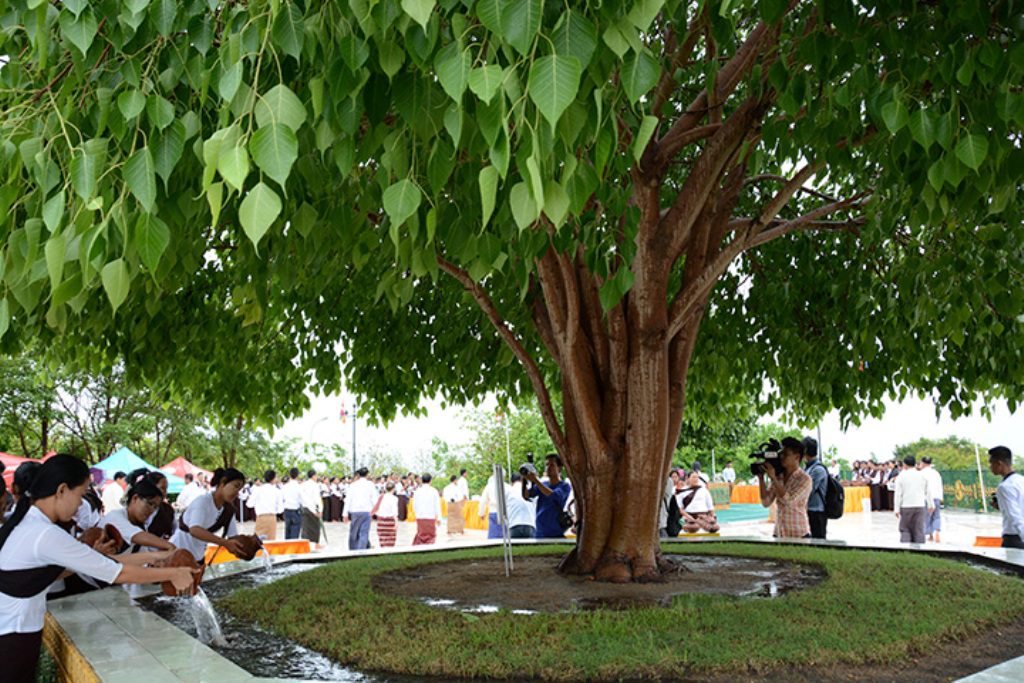
Tradition ascribes to the Buddha himself instruction on how to pay him homage. Just before he died, he saw his faithful attendant Ananda, weeping. The Buddha advised him not to weep, but to understand the universal law that all compounded things (including even his own body) must disintegrate. He advised everyone not to cry over the disintegration of the physical body but to regard his teachings (The Dhamma) as their teacher from then on, because only the Dhamma truth is eternal and not subject to the law of change. He also stressed that the way to pay homage to him was not merely by offering flowers, incense, and lights, but by truly and sincerely striving to follow his teachings. This is how Buddhists are expected to celebrate Vesak: to use the opportunity to reiterate their determination to lead noble lives, to develop their minds, to practise loving-kindness and to bring peace and harmony to humanity.
The exact date of Vesak is based on the Asian lunisolar calendars and is primarily celebrated in Vaisakha month of the Buddhist calendar and the Hindu calendar, and hence the name Vesak. In Nepal, which is considered the birth-country of Buddha, it is celebrated on the full moon day of the Vaisakha month of the Hindu calendar, and is traditionally called Buddha Purnima, Purnima meaning the full moon day in Sanskrit. In Theravada countries following the Buddhist calendar, it falls on a full moon Uposatha day, typically in the 5th or 6th lunar month. Nowadays, in Sri Lanka, Nepal, India, Vesak/Buddha Purnima is celebrated on the day of the full moon in May in the Gregorian calendar. In Thailand, Laos, Indonesia, Vesak is celebrated on the fourteenth or fifteenth day of the fourth month in the Chinese lunar calendar. In China, and Korea, Vietnam, Buddha’s Birthday is celebrated on the eighth day of the fourth month in the Chinese lunar calendar, in Japan the same day but in the Gregorian calendar. The date varies from year to year in the Western Gregorian calendar, but usually falls in April or May. In leap years it may be celebrated in June.
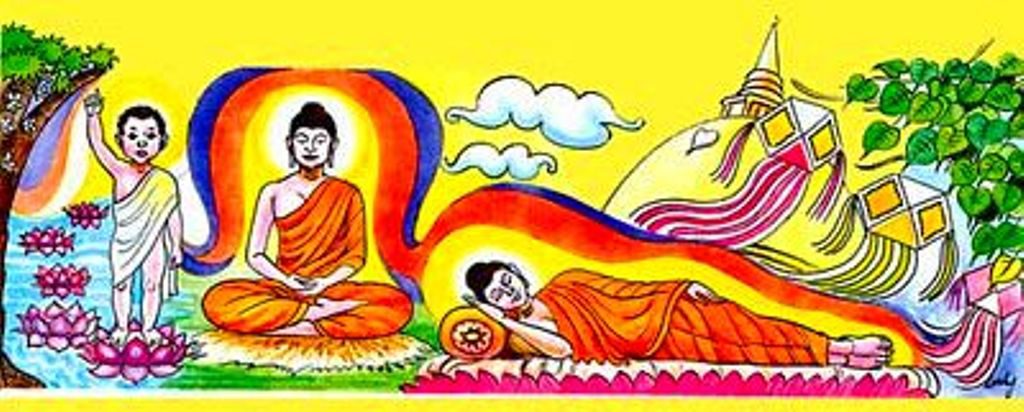
The heart of the Teachings of the Buddha is contained in the teachings of the Four Noble Truths, namely,
The Noble Truth of Dukkha or suffering
The Origin or Cause of suffering
The End or Cessation of suffering
the Path which leads to the cessation of all sufferings
The First Noble Truth is the Truth of Dukkha which has been generally translated as ‘suffering’. But the term Dukkha, which represents the Buddha’s view of life and the world, has a deeper philosophical meaning. Birth, old age, sickness and death are universal. All beings are subject to this unsatisfactoriness. Separation from beloved ones and pleasant conditions, association with unpleasant persons and conditions, and not getting what one desires – these are also sources of suffering and unsatisfactoriness. The Buddha summarises Dukkha in what is known as the Five Grasping Aggregates.
Herein, lies the deeper philosophical meaning of Dukkha for it encompasses the whole state of being or existence.
Our life or the whole process of living is seen as a flux of energy comprising of the Five aggregates, namely the Aggregate of Form or the Physical process, Feeling, Perception, Mental Formation, and Consciousness. These are usually classified as mental and physical processes, which are constantly in a state of flux or change.
When we train our minds to observe the functioning of mental and physical processes we will realise the true nature of our lives. We will see how it is subject to change and unsatisfactoriness. And as such, there is no real substance or entity or Self which we can cling to as ‘I’, ‘my’ or ‘mine’.
When we become aware of the unsatisfactory nature of life, we would naturally want to get out from such a state. It is at this point that we begin to seriously question ourselves about the meaning and purpose of life. This will lead us to seek the Truth with regards to the true nature of existence and the knowledge to overcome unsatisfactoriness.
From the Buddhist point of view, therefore, the purpose of life is to put an end to suffering and all other forms of unsatisfactoriness – to realise peace and real happiness. Such is the significance of the understanding and the realisation of the First Noble Truth.
The Second Noble Truth explains the Origin or Cause of suffering. Tanha or craving is the universal cause of suffering. It includes not only desire for sensual pleasures, wealth and power, but also attachment to ideas’, views, opinions, concepts, and beliefs. It is the lust for flesh, the lust for continued existence (or eternalism) in the sensual realms of existence, as well as the realms of form and the formless realms. And there is also the lust and craving for non-existence (or nihilism). These are all different Forms of selfishness, desiring things for oneself, even at the expense of others.
Not realizing the true nature of one’s Self, one clings to things which are impermanent, changeable and perishable. The failure to satisfy one’s desires through these things; causes disappointment and suffering.
Craving is a powerful mental force present in all of us. It is the root cause of our sufferings. It is this craving which binds us in Samsara – the repeated cycle of birth and` death.

The Third Noble Truth points to the cessation of suffering. Where there is no craving, there is no becoming, no rebirth. Where there is no rebirth, there is no decay. no, old age, no death, hence no suffering. That is how suffering is ended, once and for all.
The Fourth Noble Truth explains the Path or the Way which leads to the cessation of suffering. It is called the Noble Eightfold Path.
The Noble Eightfold path avoids the extremes of self-indulgence on one hand and self-torture on the other. It consists of Right Understanding, Right Thought, Right Speech, Right Action, Right Livelihood, Right Effort, Right Mindfulness and Right Concentration.
These path factors may be summarised into 3 stages of training, involving morality, mental culture and wisdom.
Morality or good conduct is the avoidance of evil or unwholesome actions — actions which are tainted by greed, hatred and delusion; and the performance of the good or wholesome actions, – actions which are free from greed, hatred and delusion, but motivated by liberality, loving-kindness and wisdom.
The function of good conduct or moral restraint is to free one’s mind from remorse (or guilty conscience). The mind that is free from remorse (or guilt) is naturally calm and tranquil, and ready for concentration with awareness.
The concentrated and cultured mind is a contemplative and analytical mind. It is capable of seeing cause and effect, and the true nature of existence, thus paving the way for wisdom and insight.
Wisdom in the Buddhist context, is the realisation of the fundamental truths of life, basically the Four Noble Truths. The understanding of the Four Noble Truths provide us with a proper sense of purpose and direction in life. They form the basis of problem-solving.
The message of the Buddha stands today as unaffected by time and the expansion of knowledge as when they were first enunciated.
No matter to what lengths increased scientific knowledge can extend man’s mental horizon, there is room for the acceptance and assimilation for further discovery within -the framework of the teachings of the Buddha.
The teaching of the Buddha is open to all to see and judge for themselves. The universality of the teachings of the Buddha has led one of the world’s greatest scientists, Albert Einstein to declare that ‘if there is any religion that could cope with modern scientific needs, it would be Buddhism’
The teaching of the Buddha became a great civilising force wherever it went. It appeals to reason and freedom of thought, recognising the dignity and potentiality of the human mind. It calls for equality, fraternity and understanding, exhorting its followers to avoid evil, to do good and to purify their minds.
Realising the transient nature of life and all worldly phenomena, the Buddha has advised us to work out our deliverance with heedfulness, as ‘heedfulness is the path to the deathless’.
His clear and profound teachings on the cultivation of heedfulness otherwise known as Satipatthana or the Four Foundations of Mindfulness, is the path for the purification of beings – for the overcoming of sorrows and lamentation, for the destruction of all mental and physical sufferings, for the attainment of insight and knowledge and for the realisation of Nibbana. This has been verified by his disciples. It is therefore a path, a technique which may be verified by all irrespective of caste, colour or creed.
